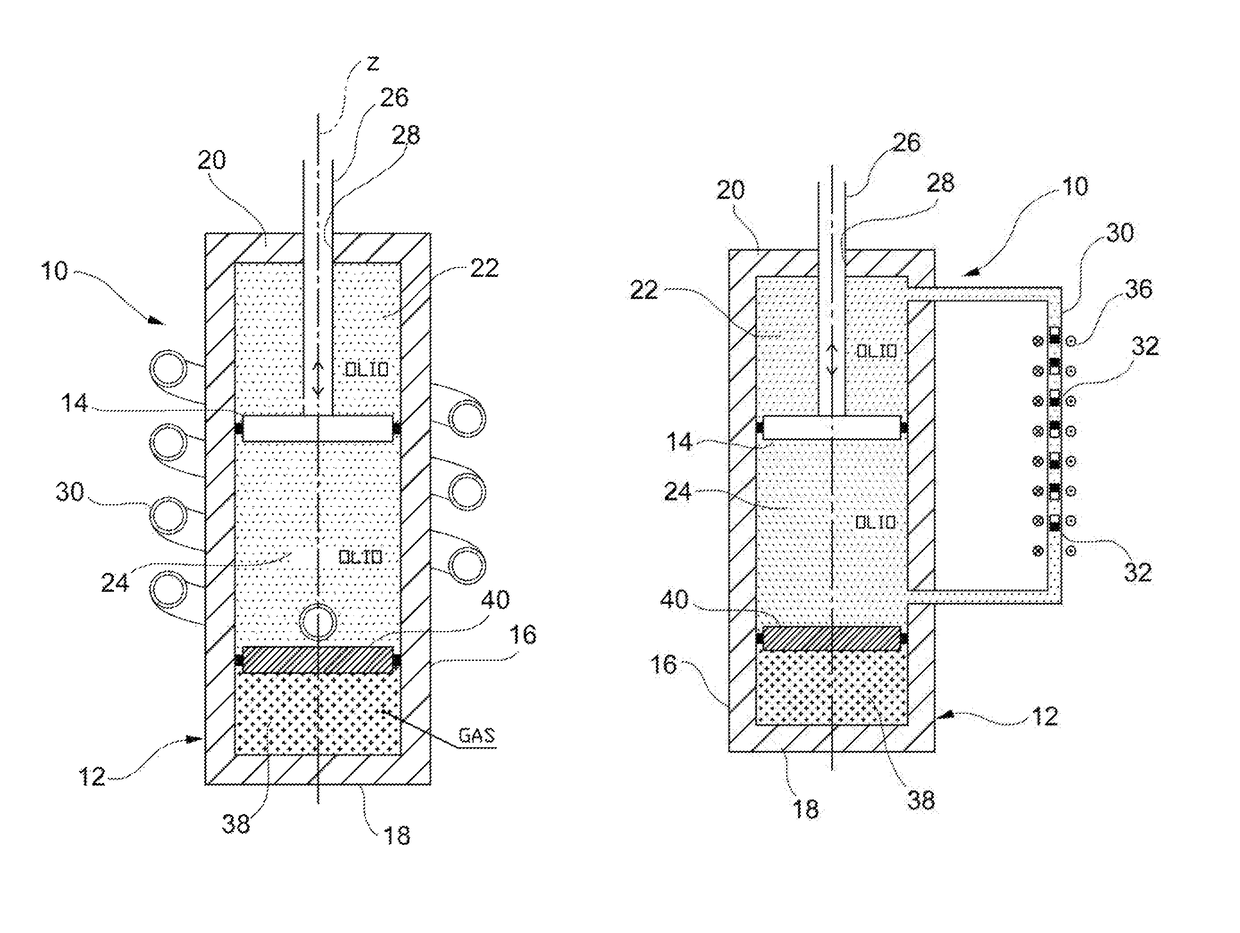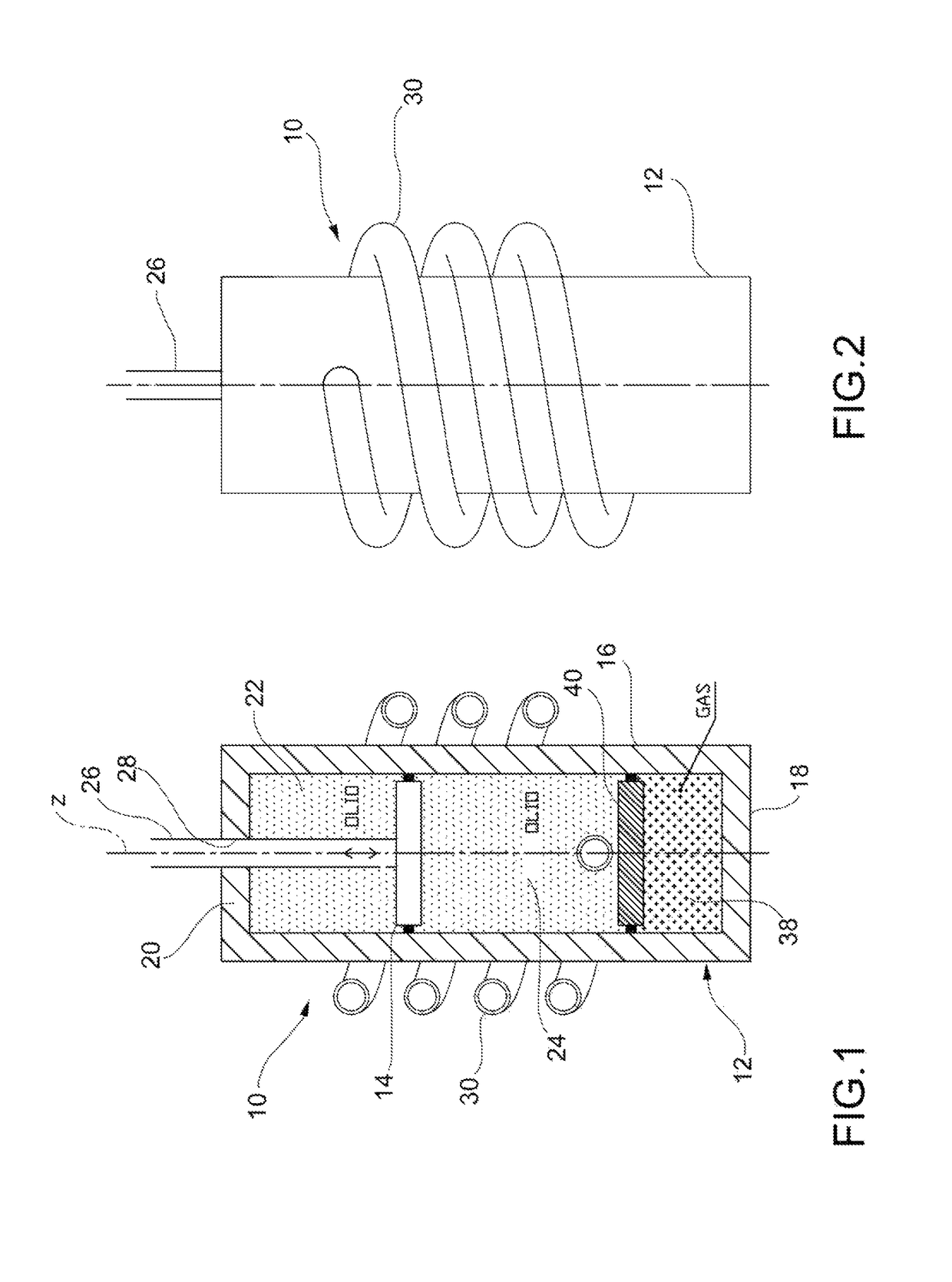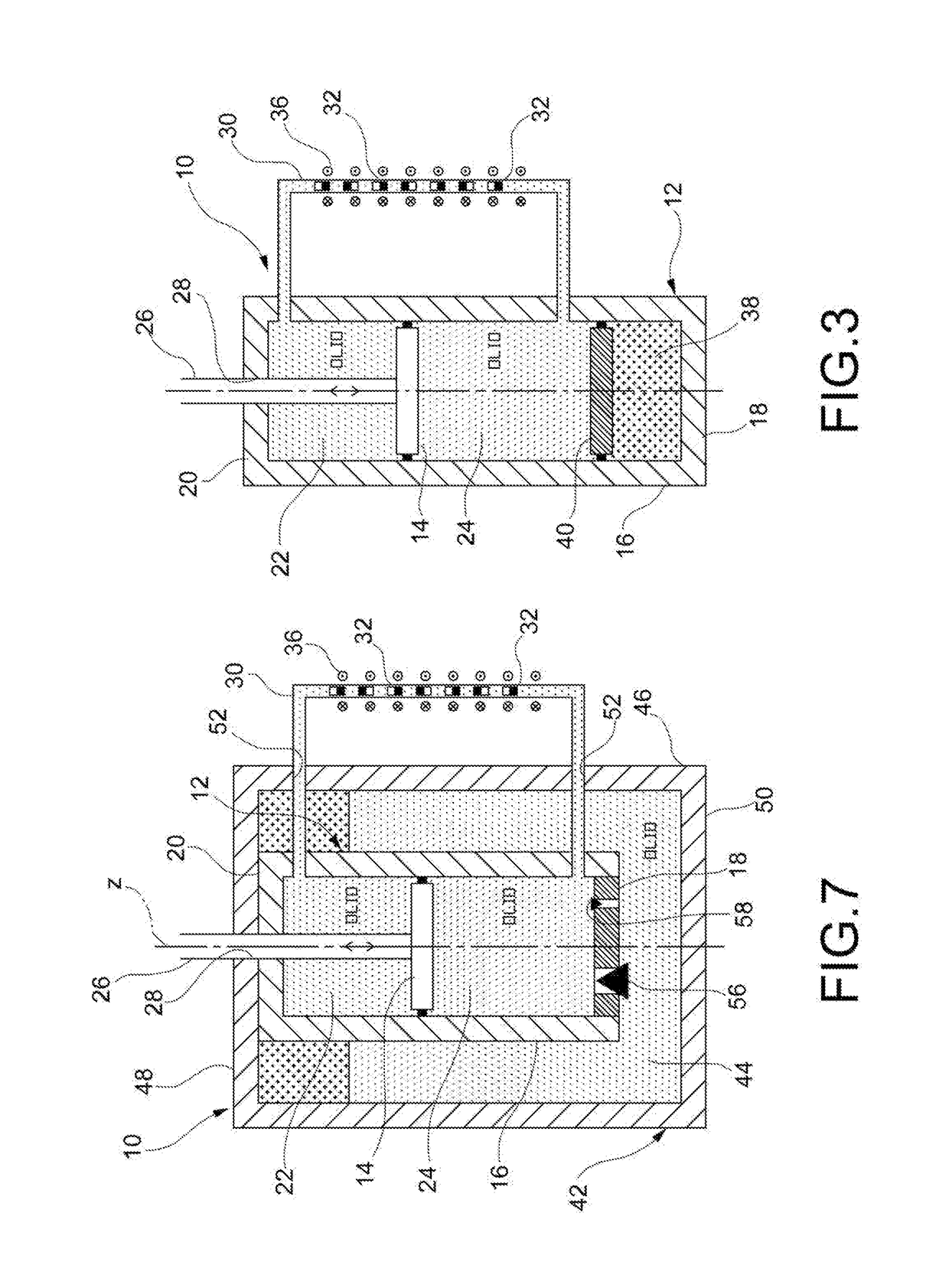Regenerative hydraulic shock-absorber for vehicle suspension
a technology of hydraulic shock absorber and vehicle suspension, which is applied in the direction of shock absorber, electric generator control, machine/engine, etc., can solve the problems of reducing the total efficiency of conversion from kinetic energy to electric energy by a significant amount, difficult to find the space required to arrange the hydraulic motor and the electric generator associated with each shock absorber, and increasing the complexity of the vehicle suspension system. , to achieve the effect of maximizing the electromotive force and limiting the length, and therefore the electrical resistan
- Summary
- Abstract
- Description
- Claims
- Application Information
AI Technical Summary
Benefits of technology
Problems solved by technology
Method used
Image
Examples
Embodiment Construction
[0039]With reference first to FIGS. 1 to 3, a regenerative shock-absorber (hereinafter simply referred to as “shock-absorber”) according to a first embodiment of the present invention is generally indicated 10. The shock-absorber 10 comprises first of all, in a per-se-known manner, a cylinder 12 having a longitudinal axis z (typically oriented vertically or slightly inclined with respect to the vertical) and a piston 14 mounted slidably inside the cylinder 12 along the axis z. The cylinder 12 is filled with a hydraulic working fluid (typically oil, which proves to be an almost incompressible fluid). The cylinder 12 comprises a cylindrical lateral wall 16, a lower wall (or bottom wall) 18 and an upper closure assembly (or cap) 20. The piston 14 splits the internal volume of the cylinder 12 into two variable-volume working chambers, namely an upper working chamber, or extension chamber, 22 and a lower working chamber, or compression chamber, 24. A rod 26 is rigidly connected to the pi...
PUM
 Login to View More
Login to View More Abstract
Description
Claims
Application Information
 Login to View More
Login to View More - R&D
- Intellectual Property
- Life Sciences
- Materials
- Tech Scout
- Unparalleled Data Quality
- Higher Quality Content
- 60% Fewer Hallucinations
Browse by: Latest US Patents, China's latest patents, Technical Efficacy Thesaurus, Application Domain, Technology Topic, Popular Technical Reports.
© 2025 PatSnap. All rights reserved.Legal|Privacy policy|Modern Slavery Act Transparency Statement|Sitemap|About US| Contact US: help@patsnap.com



